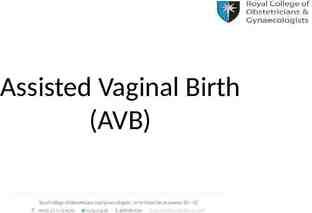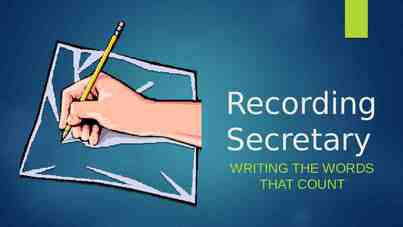Introduction to Computers Chapter 1 By: Nicholas Smalarz Chris Cahill
21 Slides821.00 KB
Introduction to Computers Chapter 1 By: Nicholas Smalarz Chris Cahill Daniel Upbin
Outline I. II. III. IV. V. VI. VII. VIII. What is Computer? Components of a Computer Why is a Computer so Powerful? Computer Applications and Society Examples of Computer Usage Networks and Internet Computer Software Categories of Computers Computer Applications and Society
What is a Computer? Computer- An electronic device, operating under the control of instructions stored in its own memory, that can accept data, manipulate the data according to specified rules, produce results and store the results for future use.
Here’s A Computer! In 1969 for 5975 In 2004 for 699
Components of a Computer Hardware – Input Devices Keyboard, Mouse, Microphone, Digital Camera – Output Devices Monitor, Speaker, Printer – System Unit The computer casing (inside includes the motherboard with a processor and memory) – Storage Devices Hard Drives, CD/DVD-ROM Drives, Floppy Disk Drives, USB Drives and memory cards – Communication Devices Modems, Networking Cards
Why is a Computer so Powerful? Speed – Circuits – Billions of operations in a single second Reliability and Consistency – Low failure rate – Consistent results Accuracy – Depends on input
Why is a Computer so Powerful Cont. Storage – Transfer data quickly – Store enormous amounts of data Communications – Computers can share information – Processing cycles Input Output Storage Process
Networks and Internet Computer Software Network – Is a collection of computers and devices connected together via communications devices and transmission media. Networks allow computers to share resources such as: Hardware, software, data, and information Internet – Is a worldwide collection of networks that connects millions of businesses, government agencies, educational institutions, and individuals. Uses for the internet include: Communicating with other people Access information, news, and research findings Shop for goods Banking and Investing Entertainment (online games, movies, music, etc.) Systems Software – Consists of programs that control or maintain the operations of the computer and its devices. Operating System-is a set of programs that coordinates all the activities among computer hardware devices. – Microsoft’s Window’s – Apple’s Macintosh
Networks and Internet Computer Software Continued Application Software – Consists of programs that perform specific tasks for users. Popular types of application software include: – – – – Word Processing Software Spreadsheet software Database software Presentation graphics software Software Development – A programmer is someone who develops application or system software. Popular program languages include: – C , C#, Visual Basic .NET 2003, and JavaScript. – Programs require thousands to millions of instructions. Use programming language or program development to create computer programs.
Examples of Computer Usage Home Small Office/Home Office Mobile Large Business Power
Home/Small Office Home – Desktop Computer – PDA – Uses Word Processing Finance Internet Educational Entertainment Communication Small Office – Desktop Computers – Network – Uses Spreadsheets E-Mail Internet use Manage finances
Mobile Types – PDA – Notebook Computer – Cell Phone Usually wireless Uses – Communication – Presentations – Organization
Large Business/Power Large Business – Massive network IT Department – Types Kiosk Desktop Mobile – Uses Accounting Business Network Mgt. Power – Workstation – Industry standards – Used by Engineers Architects – Uses Publishing Editing Internet
Categories of Computers Personal Computers (PC) – Is a computer that can perform all of its input, processing, output, and activities by itself. Two types of personal computers are: – PC (personal computer) based on the IBM personal computer design, which Dell, Gateway, and Toshiba manufacture. – Apple computers Desktop Computers – Is designed so the system unit, input devices, output devices, and any other devices fit entirely on or under a desk or table. System Unit- Is a tall and narrow tower, that can sit upright or could lye sideways with the system monitor on top. Mobile Computers and Mobile Devices – A mobile computer and a mobile device are both capable of being taking place to place by just carrying them. A mobile device is small enough to hold in your hand. Notebook computers (laptop computer) is a portable, personal computer small enough to fit on your lap. Tablet PC is a special type of notebook computer that allows you to write or draw on the screen using a digital pen.
Categories of Computers Continued Midrange Servers – Are more powerful and larger than a workstation computer. Store data and programs Typically support several hundred PC’s at the same time Mainframes – Are large, expensive, very powerful computers that can handle hundreds or thousands of connected users simultaneously. Banks, airlines, and insurance companies use mainframes Supercomputers – Are the fastest, most powerful computer-and most expensive. Capable of processing more than 100 trillion instructions in a single second. Can store more than 16,000 times the average desktop computer. – Supercomputers are used to compute applications in: » Medicine » Aerospace » Weather forecasting » Nuclear energy research
Computer Applications and Society Education Finance Government Health Care Science Publishing Travel Industry
Computer Applications and Society Education – Is the process of acquiring knowledge. So in today’s technological world, educators turn to computers to assist in education. Students use software to assist with learning or to complete assignments. Drop in computer cost have allowed educators to equip school science labs and classrooms with computers. Some schools require students to have a notebook computer or PDA. – Learning takes place in classroom and the other part occurs on the Web. 70 percent of college offer some type of distance learning classes. Finance – Computers are used to manage finances for individuals and companies. Online Banking- users can access account balances, pay bills, copy monthly transactions from the bank’s computer right into their computers. – Web-based financial institutions: » Transfer cash to another person’s account or bank account » Companies use it for rebates and refunds Online Investing- buying and selling of stocks without the use of a broker. – Transaction fee’s are much less than trading with a broker
Computer Applications and Society Continued Health Care – Nearly every area of health care uses computers. Maintain patient records Monitor patient vital signs Assist doctors, nurses, and technicians in medical test To file insurance claims Surgeons use computer-controlled devices to aid in some surgeries Government – Provides society with direction by making and administering policies. As a part of the daily job, government employees use computers everyday to run there respected agencies. About 62% of the people in the United States access government Web sites. – File taxes – Apply for permits and licenses – Renew driver license Government computers store vital records, such as fingerprints and criminal records.
Computer Applications and Society Continued Science – All branches of science, from biology to astronomy to meteorology, use computers to assist them with in: Collecting Analyzing Modeling data – Communication with other scientist. Publishing – Is the process of making works available to the public printed in: Books Magazines Newspapers – Publishers use computer software to layout text, graphics, and photographs. Journalist carry: – Notebook computers – Digital Cameras – Many publishers today make these printed materials available on the internet. Copy them to your desktop computer Handheld computer PDA
Computer Applications and Society Continued Industry – Computer-aided manufacturing (CAM) The use of computers to assist with manufacturing processes such as fabrication and assembly. Reason for using CAM in Industries include: – Reducing product development cost – Shorten a product’s time to market – Stay ahead of competition – CAM is used by a variety of industries that include: Oil drilling Automobile Manufacturing Food production Travel – Onboard navigation systems are built into many cars today. Enable the driver to: – Get directions – Call for help (emergency situations) – Track vehicle if stolen – The Web allows anyone to prepare for a trip very easily. Purchase airline and train tickets online Book hotel rooms Pull directions off
The End


























